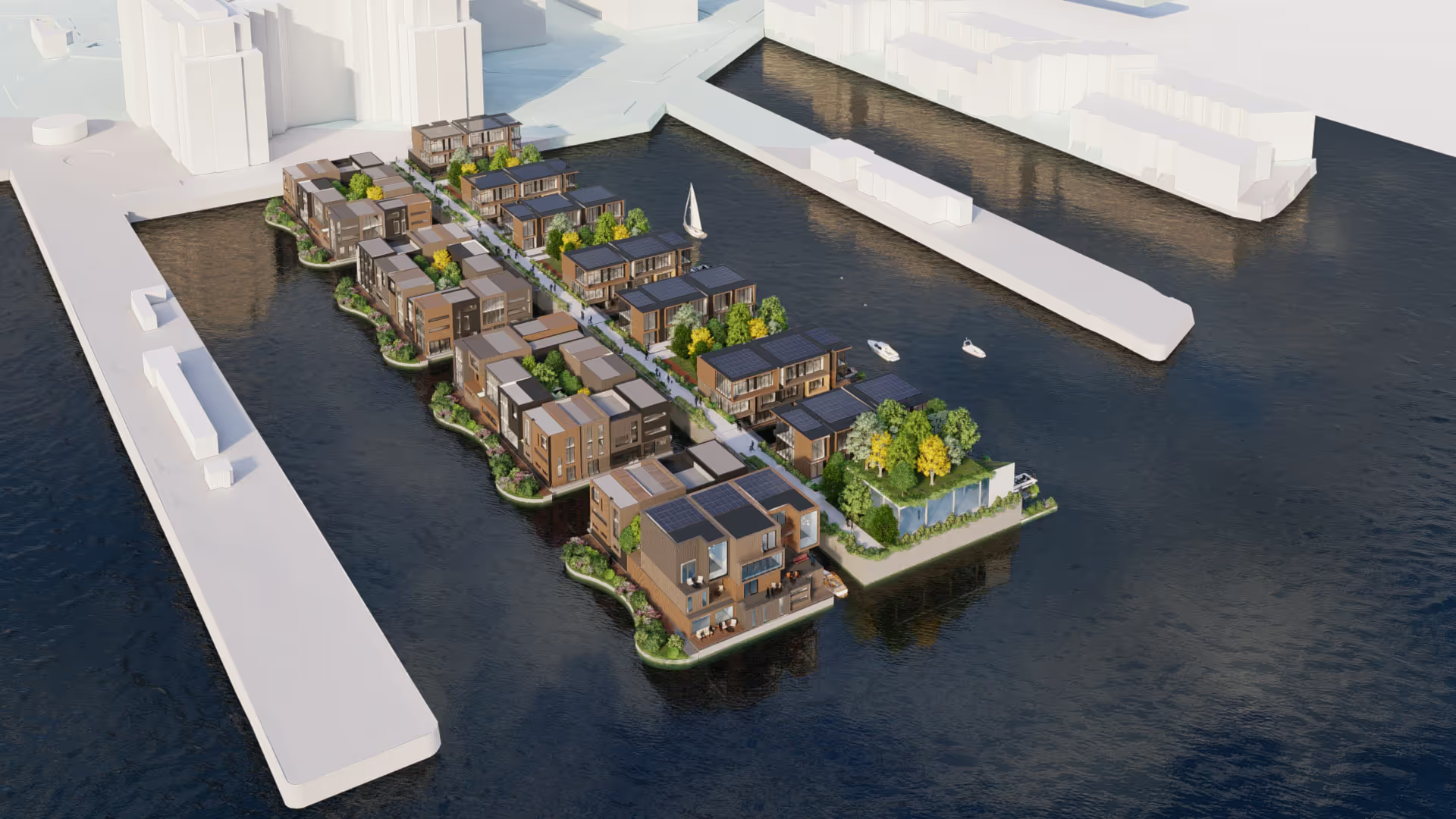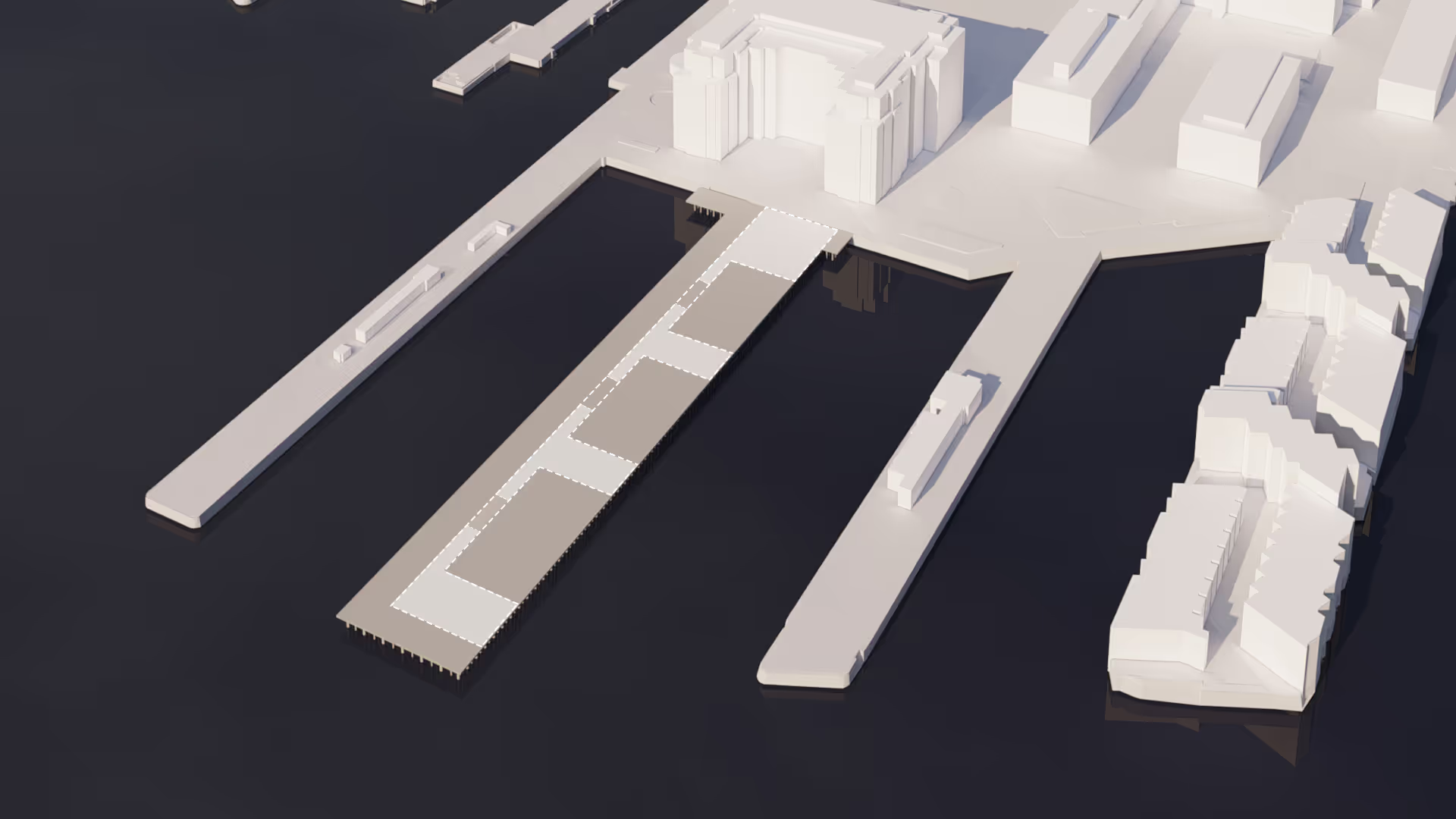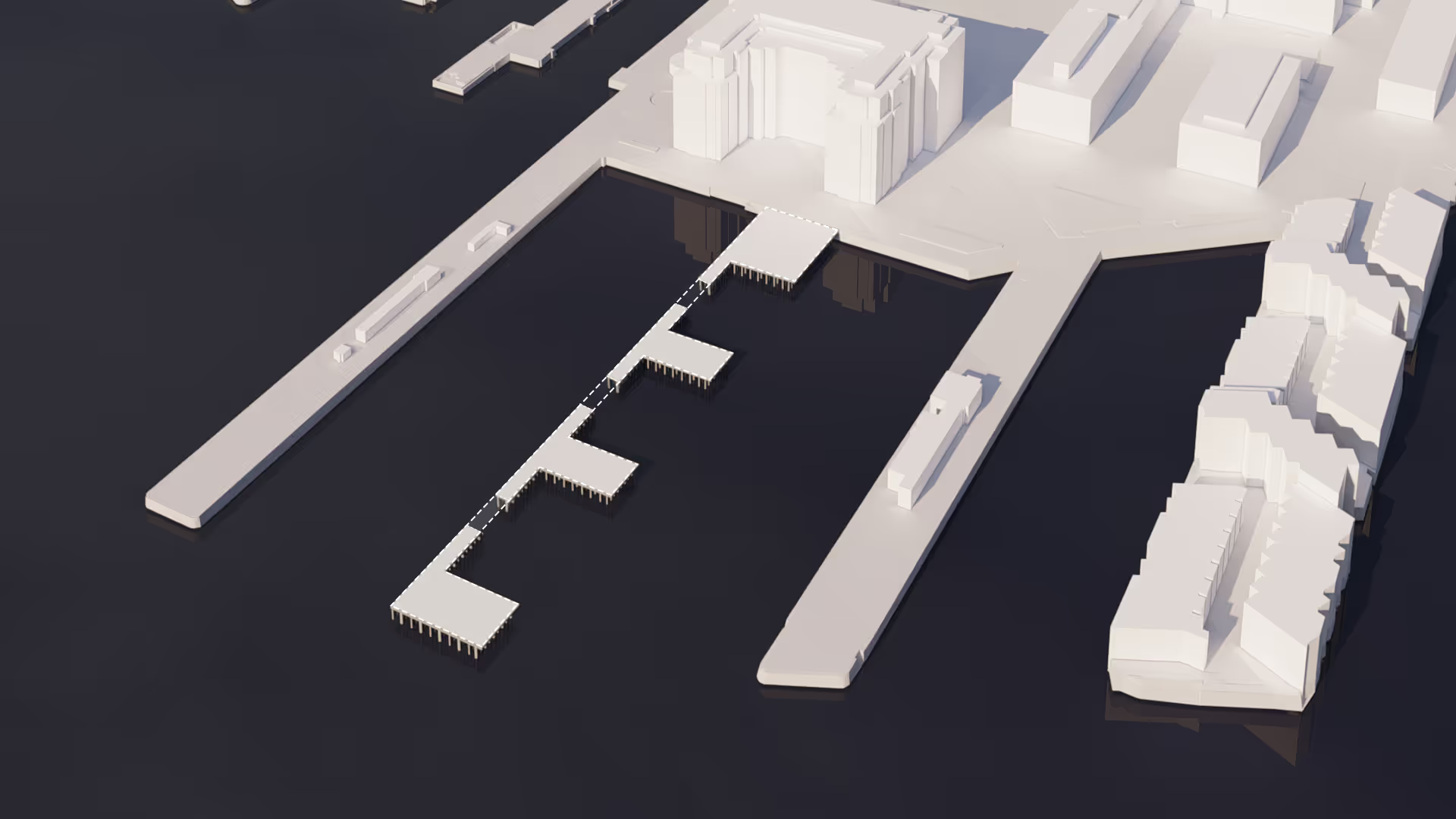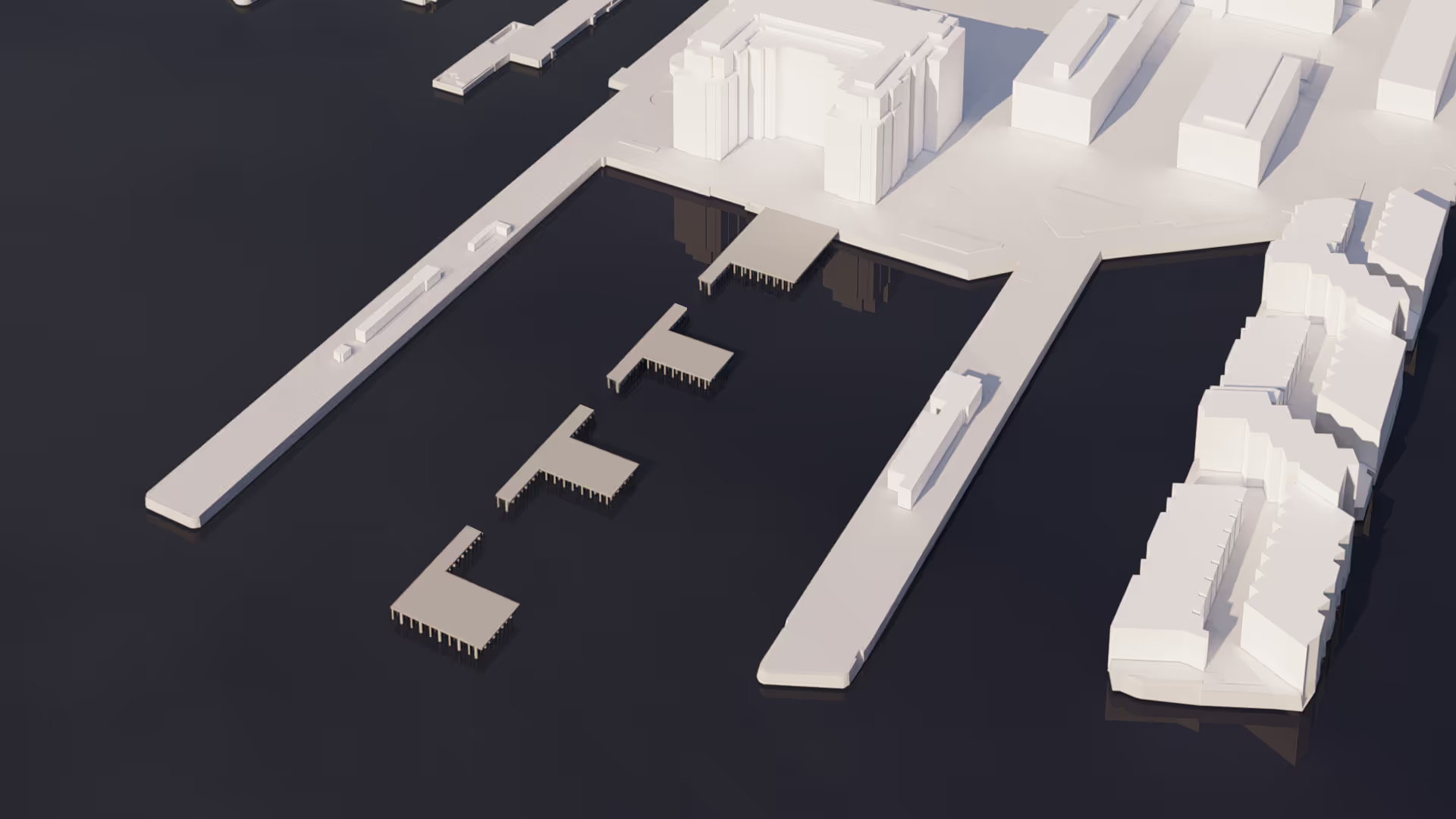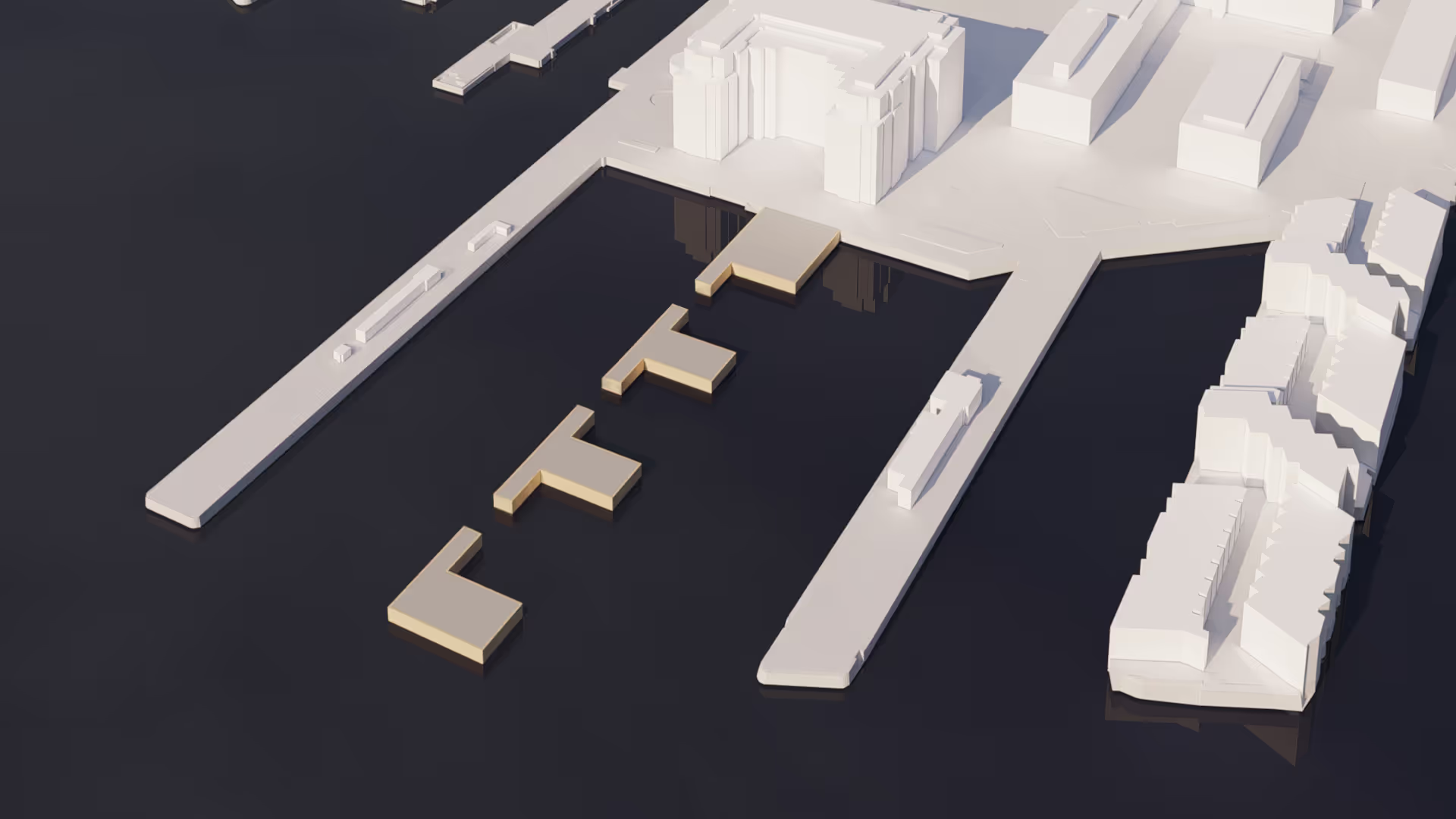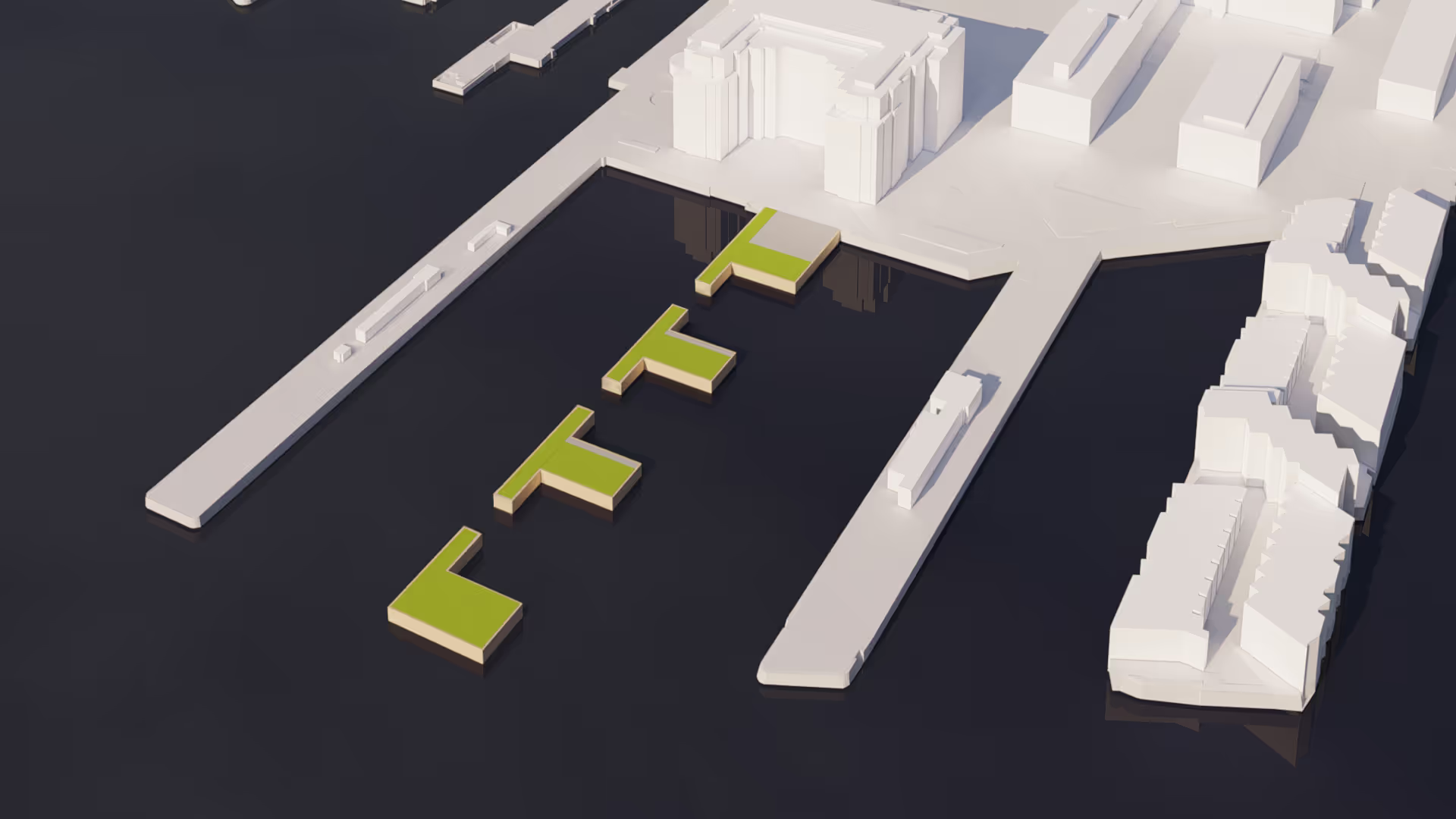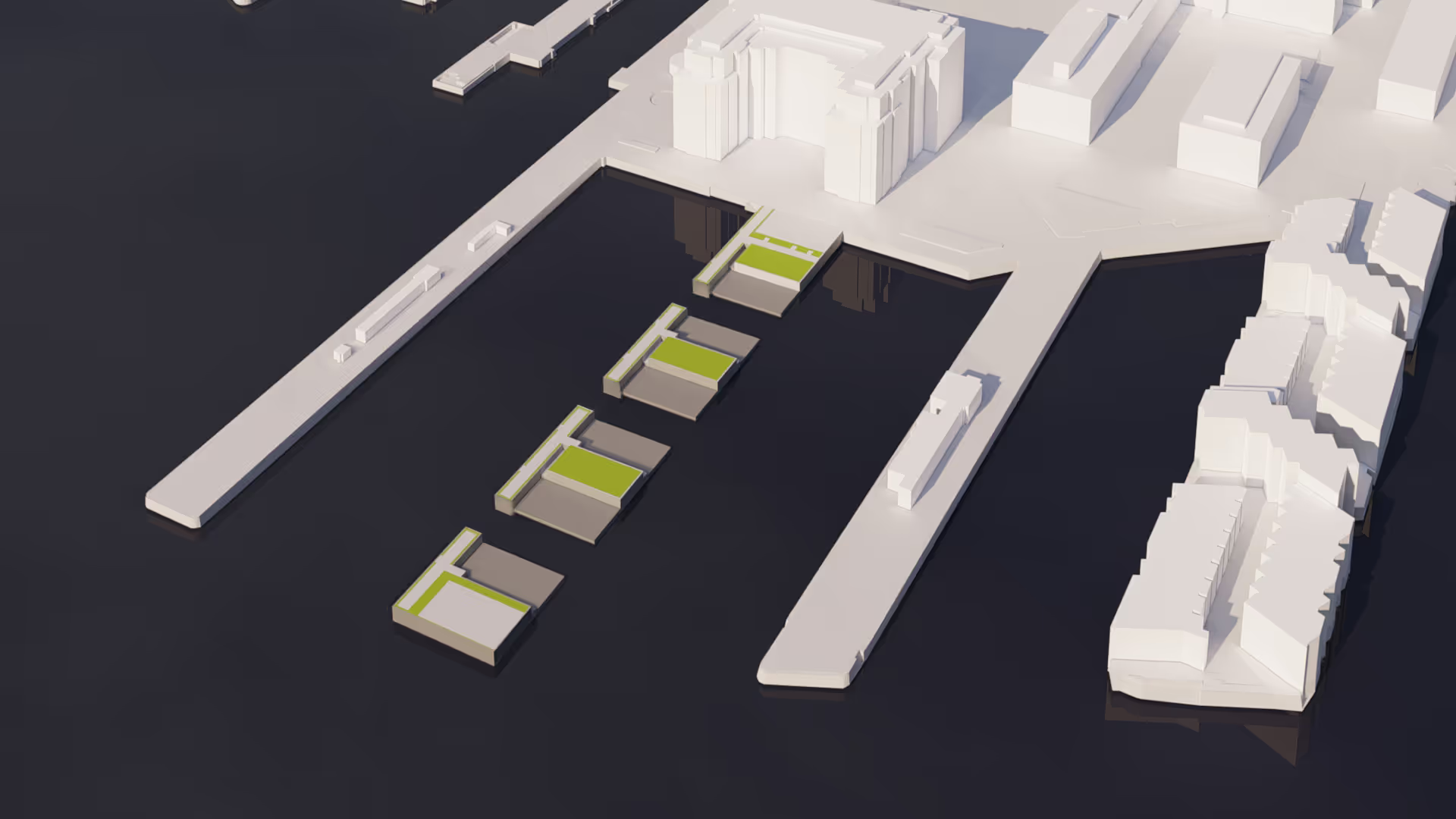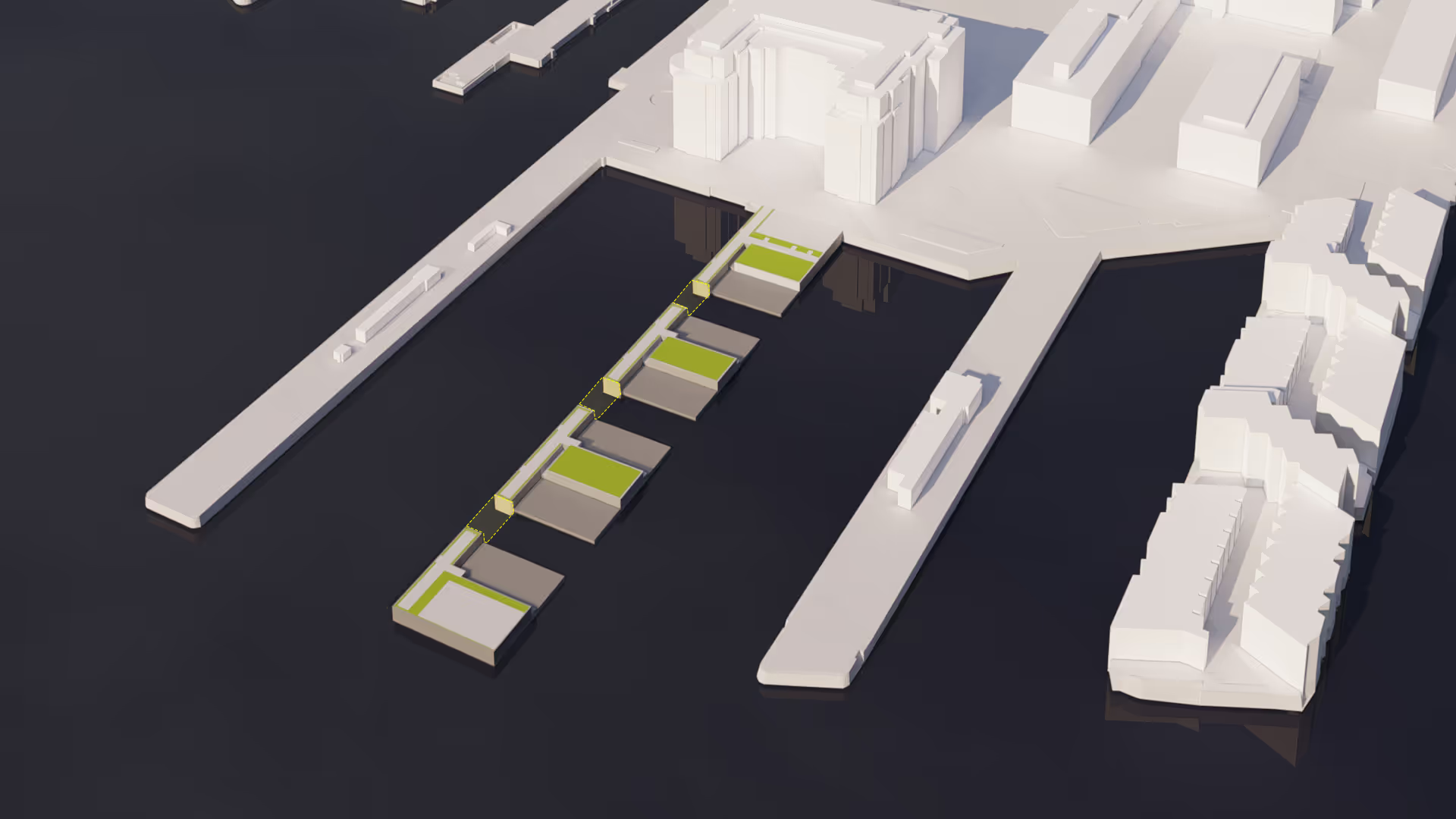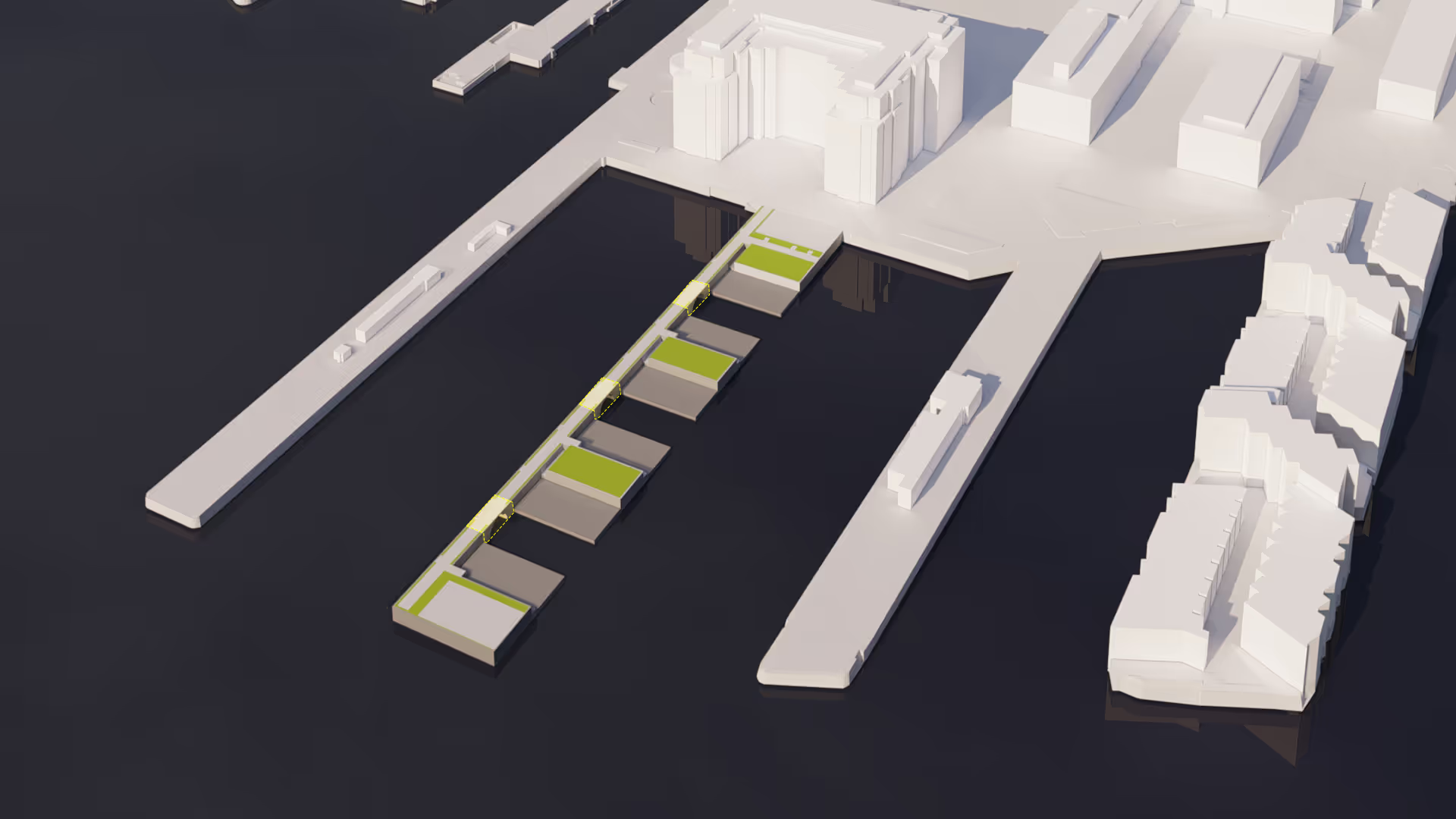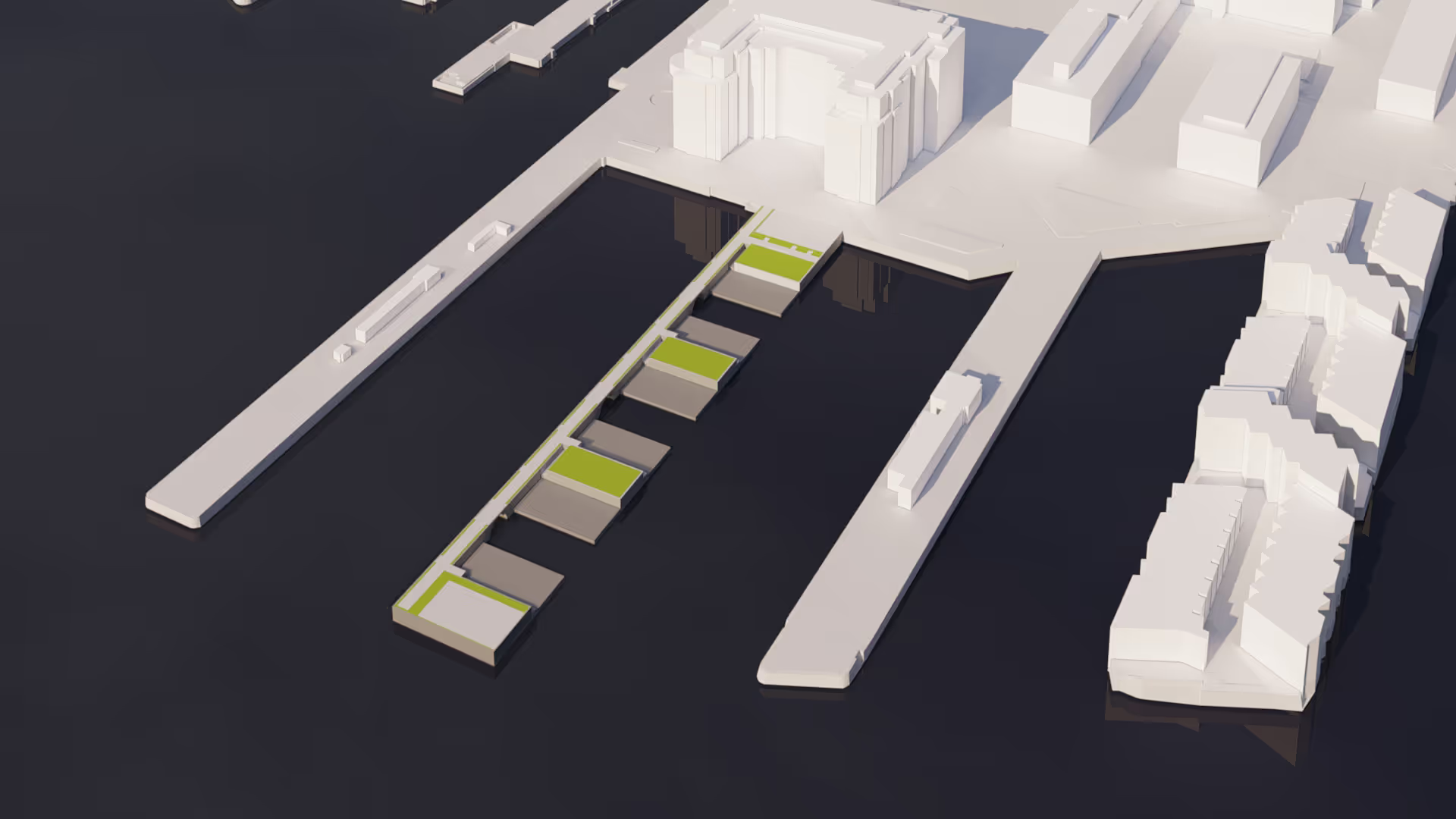Background
In collaboration with Waterstudio.NL, we were commissioned to explore proposals for transforming a former naval pier in Charlestown, Boston, into the U.S. East Coast’s first floating housing community.
The project addresses rising urban real estate costs and the increasing demand for affordable, climate-resilient housing.
By treating the waterfront as a strategic urban asset, the development seeks to provide high-quality homes while activating public spaces and promoting sustainable city living.
The scheme also demonstrates a scalable model for coastal cities worldwide, showcasing how floating architecture can adapt to rising sea levels and evolving market needs.



